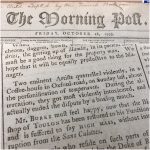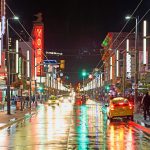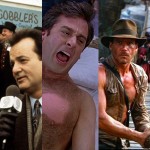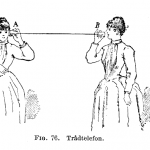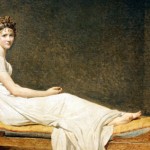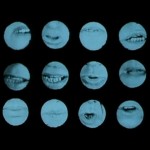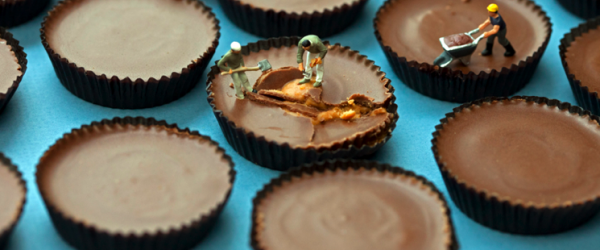
An Interview with Photographer Christopher Boffoli
Artists, InterviewsIf you have read Jonathan Swift’s 18th century classic “Gulliver’s Travels” (or seen its film adaptations), you may remember that its globe-girdling hero, Gulliver, had journeyed to exotic, far-flung lands, where he encountered strange beings—some tiny; some gargantuan; some cerebral and equine; and some rambunctious and simian-like.
Seattle, Washington-based photographer and artist, Christopher Boffoli, like Gulliver, is widely-traveled and he too, has come across Lilliputian life-forms—those that he has himself created.
His “Disparity” series features Lilliputian, hand-painted figures, planted in real food environments. By literally, taking on more than what the little toy-like people can chew, they offer a visual commentary on America’s problem of excess consumption.
ZOUCH magazine’s Ally Mookerjee, recently caught up with Boffoli to discuss his art.
What message does this series convey?
The scale figures are detailed enough to suggest, at first glance, that they are real. But when people look more closely, their surprise might turn into a laugh, at what the photograph is suggesting. Many people will look at an image and say, “I wish I were that person standing next to a wall of chocolate cake.” And that’s when the images might convey some of the subtler messages, about the overconsumption of food in America, and the way in which we have become food spectators. Some of the other ideas communicated are our unawareness of the invisible labor pool that works on our food supplies as well as the environmental impact of the mountains of food we eat. An often missed facet of the work is the accompanying captions that are designed to reinforce the humor.
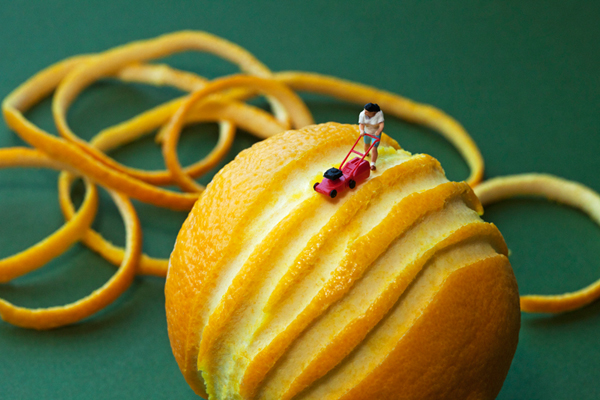
Zesty Mowers: It was SO like Patty: Right idea, wrong execution.
What is the creative process behind it?
I usually start with the food, seeing what’s in season at the farmer’s market, considering what I’ve shot before. Or, I think about iconic American foods, like Oreo cookies or Twinkies, and how an image of those things might tap into someone’s early memory, current closet addiction, or supermarket guilty pleasure.
At the same time, I also consider how I can populate those images with figures, with a context that makes sense. By now, I have quite a community of little figures that I use, and I keep adding to that arsenal all the time. So finding a clever match for what I want to shoot is always a big determining factor in what I want to shoot.
What is the extent of the use of photo-editing software in your work?
These images may look simple, but they can be tedious to set up. I often try to do multiple setups over a few hours. Some go quickly. Others take longer. There is a certain corner of my studio that I tend to use for this project. We have a lot of overcast days in Seattle. So it has marvelous, diffused light. I try to use natural lighting as much as possible, although if I’m still working as the evening approaches, I’ll set up a couple of off-camera slaves to add light. Sometimes, when a setup just doesn’t work the way I had hoped, I’ll change the orientation of the background and/or the figures. Other than some light and color adjustment, the images are not heavily manipulated with image-processing software.

Podcast: As a pea pod splitter, Pratt was an absolute surgeon.
How do you create the food environments?
Unlike in commercial food photography, where there is a lot of cheating, the food I use is real. I don’t, for instance, use white glue in place of milk, or glass cubes instead of ice. The food I use may not always be something you’d want to eat at the end of the shoot, but it’s still real.

Cucumber Sunbathers: Everyone just wanted to relax. But after Deborah got a few beers in her, she just wouldn't stop talking.
When did you embark on this project?
The bulk of this photographic series was shot in the last several years.
Does this concept have a tradition?
The concept apparently isn’t new. Some of the earliest work with scale figures and food goes back to the 1970s. In the time since my photographs have gone viral around the world, I’ve been made aware of some other contemporary artists who are doing parallel work. That doesn’t surprise me at all. Toys and food are among the most common elements in just about every culture.
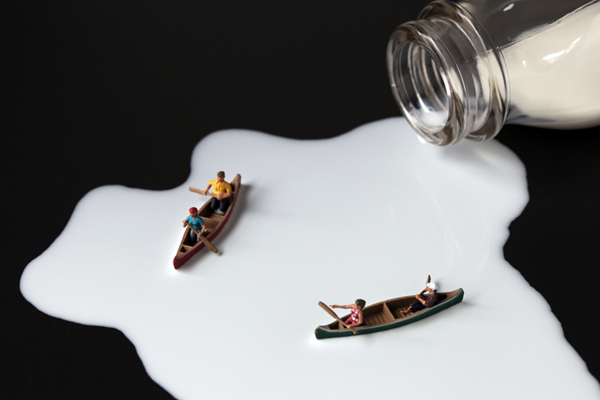
Canoe Au Lait: Lizzie was one of those people who would use absolutely any excuse to stop paddling.
What inspired it?
Kids, in general, live in an out-of-scale, adult world. And meticulously detailed toys are even smaller representations of real-life things. So issues of scale are all around us from an early age, and in my case, I took note of it, especially because of its depictions I was seeing in the late ‘70s and early ‘80s media, in television shows like “Dr. Shrinker” and movies like “The Incredible Shrinking Woman,” “Honey I Shrunk the Kids,” and “Innerspace,” etc. I recall being fascinated by the recurring theme of the “Captain Kangaroo” show that showed a bunch of tiny people living in a cracker box behind the books on one of his bookshelves. For some reason, the device of tiny people in a larger-scale world is an idea that is timeless and extremely compelling.
Moreover, as a kid, I was also into model building, electric race cars, and model railroading, which were sources of early inspiration.
A more recent influence was a series of Chapman brothers’ dioramas that I saw at the Saatchi Gallery in London in 2002. That’s what first made me consider using scale figures as a medium. Around that same time, I saw a work called the “Travelers” by Walter Martin and Paloma Munoz, which I found to be brilliant.

Peanut Butter Cup Technicians: This kind of disaster required specialized personnel and equipment.






